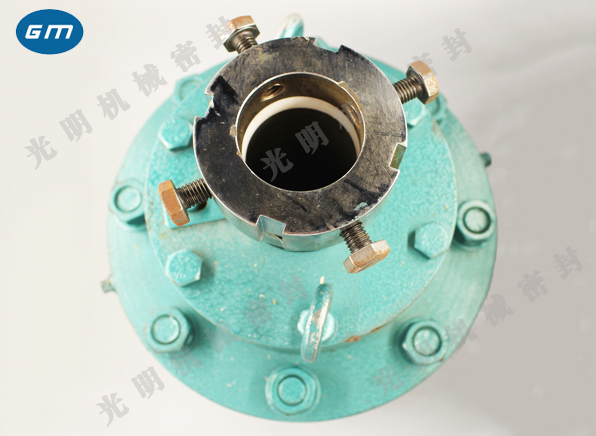Mechanical seal manufacturer Describe common faults
Causes and Analysis of Seal Failure
(1) There are three main reasons for seal failure:
1. Sealing surface open
When repairing mechanical seals, 85% of seal failures are not caused by wear, but have leaked before wear.
As soon as the sealing surface is opened, solid particles in the medium enter the sealing surface under the action of liquid pressure. After the sealing surface is closed, these solid particles are embedded on the surface of the soft ring (usually the right ink ring), which is actually a "grinding wheel" that will damage the surface of the hard ring.
Since the moving ring or rubber ring is fastened on the shaft (shaft sleeve), when the shaft is in series, the moving ring cannot fit in time, which causes the sealing surface to open and the sealing surface to close behind time, so that solid particles enter the sealing surface.
At the same time, there are also solid particles between the shaft (sleeve) and the sliding parts, which affect the sliding of the rubber ring or dynamic ring (relative dynamic sealing point, common fault). In addition, the medium will also produce crystals at the friction part between the rubber ring and the shaft (shaft sleeve), and there will also be solid substances at the spring, which will open the sealing surface.
2 Overheating
Since heat will be generated on the sealing surface, the operating temperature of the rubber ring shall be lower than the design specification. The service temperature of fluororubber and polytetrafluoroethylene is 216 ℃, and the service temperature of nitrile rubber is 162 ℃. Although they can withstand higher temperatures, the rubber ring is in danger of continuing vulcanization due to the high heat generated by the sealing surface, and eventually loses its elasticity and leaks. (Cold brittleness is considered in cold zone)

Heat will also cause crystallization of the medium between the sealing surfaces, such as carbon deposition, which will cause the sliding parts to be stuck and the sealing surface to be condensed. Moreover, some polymers become coking due to overheating, and some fluids lose lubrication due to overheating, and even flash.
Overheating can not only change the condition of the medium, but also aggravate its corrosion rate. For deformation of metal parts, cracking of alloy surface, and some coating cracks, balanced mechanical seal shall be selected for design to reduce specific pressure and prevent overheating.
3 Out of tolerance
Correct assembly tolerance is necessary for the installation of mechanical seal. The shaft (shaft sleeve) must have proper surface roughness and correct size. However, the manufacturer rarely provides tolerance data, which is critical for installation. (Rely on experience and common sense)
The dimensional accuracy and geometric tolerance of the mechanical seal must meet the requirements of the drawing, and out of tolerance will lead to premature failure of the seal.
(2) Cause analysis of seal failure
The sealing surface itself will also provide signs of seal failure. For example, when vibrating, there will be signs of wear on the transmission parts. If the signs are not obvious, it is generally caused by improper assembly.
For the poor quality graphite ring (moving ring), there are many internal pores, which is caused by the expansion of the gas gathered in the graphite during the manufacturing process, blowing out the carbon particles. Therefore, the carbon particles of this low-quality graphite ring are easy to fall off when the seal is started, which makes the sealing surface stick when the seal is stopped.
The scars on the cylindrical surface inside the sealing surface may be caused by foreign matters entering the sealing surface or improper installation. Most of the annular grooves on the sealing surface are caused by solid particles deposited on the sealing surface.
The cracks of the graphite ring (moving ring) are caused by the vibration of the transmission parts, the expansion of the rubber ring and the internal stress of the graphite ring itself, while the coking is caused by high temperature, which is common in high-temperature hot oil media in refineries.
Several strong oxidants, such as fuming sulfuric acid, xiao acid, hydrofluoric acid, sodium hypochlorite, aqua regia, and peroxides, which have corrosive effects on graphite, will intensify with the increase of temperature.
Generally, overheating of the hard ring (stationary ring) surface will cause serious wear of the sealing ring, such as vertical pump without cooling. Under high temperature and pressure, excessive compression of spring and excessive shaft string will cause excessive wear of sealing surface











